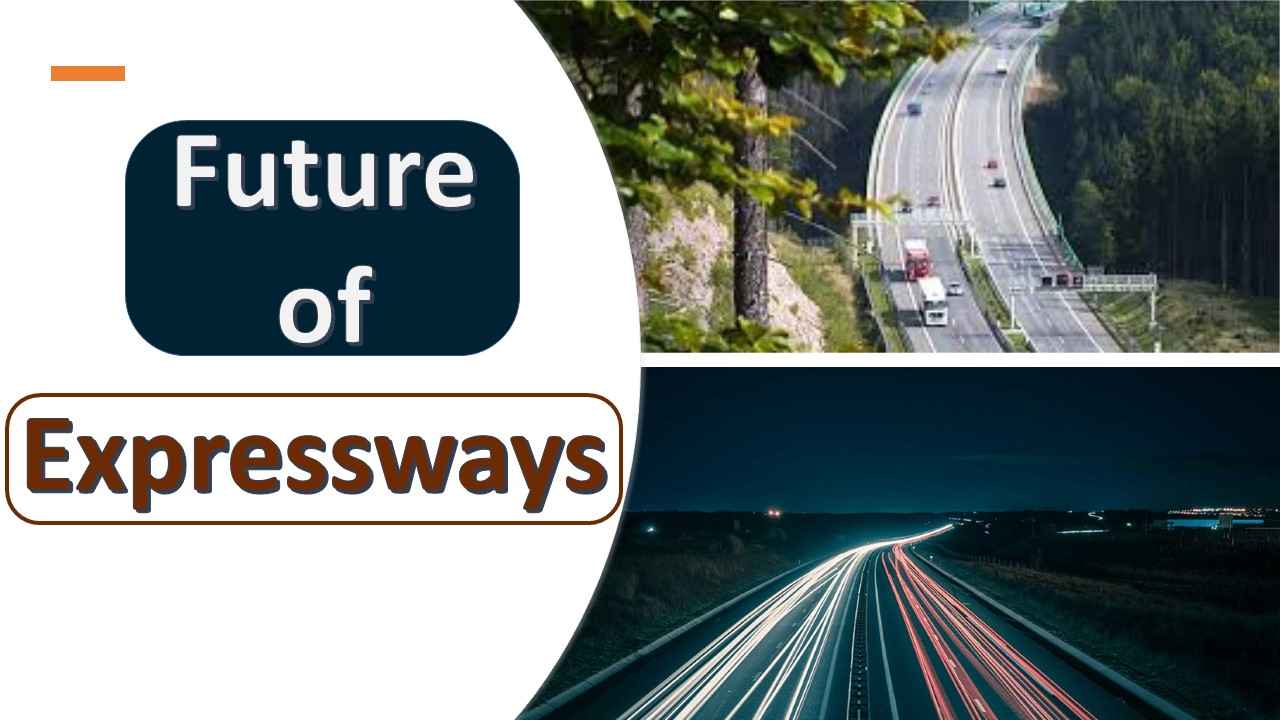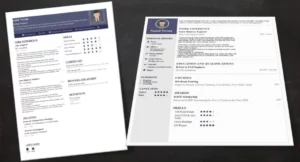The Future of Expressways- Innovations and Upgrades
- By
- Pooja |
- April 14, 2023 |
- Civil Engineering, Highway Engineering,

Table of Contents
Introduction: The Role of Expressways in Modern Transportation
Key Design Features of Expressways:
Safety Features of Expressways:
Case Studies: Successful Expressway Projects from Around the World
The Central-Wan Chai Bypass (Hong Kong):
North Luzon Expressway (Philippines):
Shanghai-Hangzhou-Ningbo Expressway (China):
Western Ring Road (New Zealand):
Innovative Expressways Design and Construction Techniques
Prefabricated Bridge Elements and Systems (PBES):
Self-Compacting Concrete (SCC):
Geosynthetic Reinforced Soil (GRS) Bridge Abutments:
Building Information Modeling (BIM):
Introduction: The Role of Expressways in Modern Transportation
A high-speed roadway that is intended to facilitate the movement of large volumes of traffic over long distances with minimal interruptions is referred to as a motorway. This type of roadway is also referred to as a motorway or motorway.
Expressways are generally built with components that, in addition to ensuring safety, cut down on travel times and improve the flow of traffic. An expressway, also known as a freeway or motorway, is a type of high-speed road designed for safe and efficient travel.
The design of an expressway incorporates a number of features that are specifically intended to ensure the safety of drivers and passengers, as well as to improve the flow of traffic.
Key Design Features of Expressways:
Limited Access:
Expressways are designed to have limited access points, with on-ramps and off-ramps that are spaced far apart. This reduces the number of conflict points and helps to maintain a high speed of travel.
Grade Separation:
Expressways are typically designed with grade separation, which means that they have overpasses or underpasses at intersections with other roads. This reduces the likelihood of accidents caused by crossing traffic.
Medians:
Expressways also often have medians, which are barriers or open spaces that separate traffic travelling in opposite directions. This improves safety by reducing the likelihood of head-on collisions.
Wide Lanes:
Expressways generally have wider lanes than other types of roads, which provides more room for drivers to manoeuvre and helps to reduce congestion.
Road Signs:
VMS and ADS signs. Expressways are designed with advanced warning signs, which give drivers time to prepare for upcoming changes in traffic patterns, such as lane closures or construction zones.
Shoulders:
Shoulders are intended to provide a secure place for motorists to pull over in the event of an unexpected emergency or mechanical failure. Expressways are typically built with broad shoulders that are able to accommodate vehicles that have stopped along the roadway.
Exit and entrance ramps:
The purpose of both exit and entrance ramps is to ensure a smooth and risk-free transition from the motorway to the surface streets below. Expressways almost always have ramps built into their designs, which let vehicles enter and leave the motorway at speeds that are considered to be safe.
Safety Features of Expressways:
The safety of drivers and pedestrians is one of the primary concerns that must be addressed during the planning and construction of motorways; consequently, numerous safety features are incorporated into their design. The following is a list of some of the most important safety elements that are found on motorways:
Barriers along the Median:
Barriers along the median are intended to separate opposing vehicles and protect drivers from being involved in head-on collisions. Expressways are generally built with guardrails made of steel or concrete, which act as a physical barrier between opposing traffic lanes.
Traffic control devices:
Devices such as traffic signals, signs, and pavement markings are examples of traffic control devices. These devices are intended to provide vehicles with direction and information. Expressways are typically built with sophisticated traffic management devices that are able to provide information in real-time regarding the flow of traffic, accidents, and the conditions of the weather.
Lighting:
The lighting of a motorway is intended to provide visibility and enhance safety, particularly at night or in conditions where there is not a lot of available light. Expressways are typically constructed with high-intensity lighting that illuminates both the roadway as well as the areas that encircle it.
Case Studies: Successful Expressway Projects from Around the World
There have been many successful expressway projects from around the world that have improved transportation infrastructure, reduced traffic congestion, and increased economic development. Here are some examples:
Tokyo Bay Aqua-Line (Japan):
The Tokyo Bay Aqua-Line is a 15.1-kilometre expressway that connects the cities of Kawasaki and Kisarazu across Tokyo Bay. It includes a 9.6-kilometre tunnel, which is the second-longest underwater tunnel in the world. The Aqua-Line has reduced travel time between the two cities from over an hour to just 15 minutes.
The Central-Wan Chai Bypass (Hong Kong):
The Central-Wan Chai Bypass is a 4.5-kilometre expressway that includes a 3.7-kilometre tunnel, which is the largest and deepest tunnel in Hong Kong. The bypass has reduced travel time between the districts of Central and Wan Chai from 30 minutes to just 5 minutes.
North Luzon Expressway (Philippines):
The North Luzon Expressway is an 84-kilometre expressway that connects Manila to the provinces of Bulacan and Pampanga in the northern Philippines. It has significantly reduced travel time between these areas and has led to increased economic development and improved access to services.
Shanghai-Hangzhou-Ningbo Expressway (China):
The Shanghai-Hangzhou-Ningbo Expressway is a 327-kilometre expressway that connects the cities of Shanghai, Hangzhou, and Ningbo in eastern China. It has greatly improved transportation infrastructure in the region and has helped to support economic development.
Western Ring Road (New Zealand):
The Western Ring Road is a 48-kilometre expressway that connects the suburbs of Auckland, New Zealand. It has reduced travel time and improved connectivity between the suburbs, as well as providing an alternative route for freight traffic around the city.
Innovative Expressways Design and Construction Techniques
There have been many innovative expressway design and construction techniques developed in recent years to improve the efficiency, safety, and sustainability of expressways. Here are some examples:
Prefabricated Bridge Elements and Systems (PBES):
PBES are precast concrete components that can be assembled quickly to form bridges and overpasses. This technique can reduce construction time and costs, as well as minimize traffic disruptions during construction.
Self-Compacting Concrete (SCC):
SCC is a type of concrete that flows easily and fills formwork without the need for vibration. This technique can reduce the need for manual labour, increase the speed of construction, and improve the durability and quality of the finished product.
Geosynthetic Reinforced Soil (GRS) Bridge Abutments:
GRS is a technique that uses geosynthetic materials to reinforce soil and create stable foundations for bridge abutments. This technique can reduce construction time and costs, as well as improve the resilience of the structure to natural disasters such as earthquakes.
Building Information Modeling (BIM):
BIM is a digital tool that allows designers, engineers, and contractors to collaborate and simulate the construction process in a virtual environment. This technique can improve the accuracy and efficiency of the design and construction process, as well as minimize errors and reduce waste.
Smart Highways:
Smart highways incorporate advanced technologies such as sensors, cameras, and communication networks to manage traffic flow, detect incidents, and improve safety. This technique can improve the efficiency and safety of expressways, as well as reduce congestion and emissions.
Conclusion:
In conclusion, motorways are designed with a number of features that reduce the amount of time needed for travel, improve the flow of traffic, and guarantee drivers' safety. It is essential to the functionality and performance of motorways that their geometric designs, which include their alignment, slope, and cross-section, be as accurate as possible.

Pooja
Founder at gcelab.com, Pooja is an Entrepreneur unlocking human potential. Working in the Principles of Lean Start-up, Pooja believes in Transparency and User Happiness the most. Pooja’s background in teaching gives her a sophisticated grasp on even the most tedious aspect of course building. She is passionate about people who believe that good is not enough.
Previous Post



